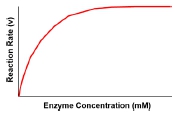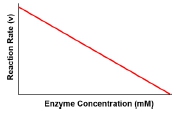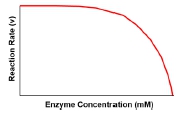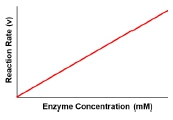In this video, we're going to begin our discussions on enzyme kinetics. So enzyme kinetics is just a branch of biochemistry that's related to the rate or the velocity of an enzyme catalyzed reaction. And so, of course, it's going to be measured by the reaction rate or the reaction velocity, which we refreshed our memories on in our last lesson video. So we know that it's symbolized with the lowercase letter v. And so enzyme kinetics actually has a lot of different factors that are incorporated into it. And so moving forward in our next couple of videos, we're going to slowly introduce the most important factors when it comes to enzyme kinetics that you guys need to be familiar with, and we're going to start with how to increase the reaction rate and the first way is to increase the temperature of the system.
Now this method actually provides an issue to cells because increasing the temperature can nonspecifically increase all the reaction rates in the system, and that is typically not what cells want to do. Typically, cells want to have control over exactly what reaction is going to increase the reaction rate. And if you increase the temperature too much, that could eventually lead to the denaturation of proteins. And so if we take a look at our first method down below in our example, notice that we have a graph that has the reaction rate on the y-axis and the temperature on the x-axis. And notice that in the beginning, as the temperature increases, so does the reaction rate. But again, the reaction rate of all the reactions in the systems is going to increase, not just the very particular reaction that a cell might be interested in increasing. Now the reaction rate will only increase up to a point where proteins in the cell begin to denature. And once proteins in the cell begin to denature, the cell is going to become stressed and eventually die. And so over time, the reaction go to method go to method that cells typically use to increase their reaction rates.
Now the second main way to increase the rate of reaction is to increase the substrate concentration. Now this method also provides an issue for cells because increasing the substrate concentration takes lots of time and energy in order to make enough substrate that will actually increase the reaction rate enough. And so when we make so much substrate, that could potentially create overcrowding in the already limited space within the cellular environment. And so if we take a look at our second method down below in our example, notice we have a graph again that has the reaction rate on the y-axis, but this time we have the substrate concentration on the x-axis. And notice that as the substrate concentration increases, so does the reaction rate. But notice that in order to get the reaction rate up to a point that's significantly high enough, we would have to add so much substrate where the amount of substrate is going to go off the graph, and that is a lot of substrate. If we were to add this much substrate, that could create overcrowding within the cell. And so for these reasons, this is not the typical go-to method for how cells increase their reaction rates.
So moving on to our third method that increases reaction rates, you can add a catalyst to the reaction. And so this method here provides a solution for cells on how to increase their reaction rates because living systems only need to use very small amounts of enzymes in order to increase their reaction rates. And so if we take a look at our third method down below in our example, notice we have a graph again that has the reaction rate on the y-axis, and again, the substrate concentration on the x-axis. So we have this same curve over here for the uncatalyzed reaction that we had before. And so the point here is that when we add an enzyme, so this red curve represents the enzyme catalyzed reaction, notice that with lower concentrations of substrate, we're able to get much higher reaction rates. And so just by adding small amounts of an enzyme, we're able to increase the reaction rates drastically. And that's why, utilizing enzymes is the go-to method for cells and living systems to increase their reaction rates. And so, moving forward, we're going to be able to get some practice utilizing these concepts, so I'll see you guys in those videos.





